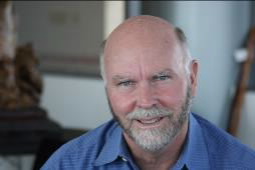EMBARGOED FOR RELEASE | March 25, 2012
J. Craig Venter, Ph.D., describes biofuels, vaccines and foods from made-to-order microbes
Note to journalists: Please report that this research was presented at a meeting of the American Chemical Society
A press conference on this topic will be held at 6 p.m. Eastern Time, March 25, 2012, in the ACS Press Center, Room 15A, in the San Diego Convention Center. Reporters can attend in person or access live audio and video of the event and ask questions at www.ustream.tv/channel/acslive.
SAN DIEGO, March 25, 2012 —Just as aspiring authors often read hundreds of books before starting their own, scientists are using decades of knowledge garnered from sequencing or “reading” the genetic codes of thousands of living things to now start writing new volumes in the library of life. J. Craig Venter, Ph.D., one of the most renowned of those scientists, described the construction of the first synthetic cell and many new applications of this work today at the 243rd National Meeting & Exposition of the American Chemical Society (ACS), the world’s largest scientific society, which is underway this week.
Media Contact
During the meeting, March 23-28, the contacts can be reached at 619-525-6268.
Michael Bernstein
202-872-6042
m_bernstein@acs.org
Michael Woods
202-872-6293
m_woods@acs.org
In a plenary talk titled, “From Reading to Writing the Genetic Code,” Venter described a fundamental shift in his field of genomics, and its promise for producing synthetic life that could help provide 21st century society with new fuels, medicines, food and nutritional products, supplies of clean water and other resources. Venter, a pioneer in the field, led the team at Celera Genomics that went head-to-head with the government-and-foundation-funded Human Genome Project in the race to decode the human genome. This quest, in which the 23,000 human genes were deciphered, ended with the teams declaring a tie and publishing simultaneous publications in 2001.
“Genomics is a rapidly evolving field and my teams have been leading the way from reading the genetic code — deciphering the sequences of genes in microbes, humans, plants and other organisms — to writing code and constructing synthetic cells for a variety of uses. We can now construct fully synthetic bacterial cells that have the potential to more efficiently and economically produce vaccines, pharmaceuticals, biofuels, food and other products.”
The work Venter described at the ACS session falls within an ambitious new field known as synthetic biology, which draws heavily on chemistry, metabolic engineering, genomics and other traditional scientific disciplines. Synthetic biology emerged from genetic engineering, the now-routine practice of inserting one or two new genes into a crop plant or bacterium. The genes can make tomatoes, for instance, ripen without softening or goad bacteria to produce human insulin for treating diabetes. Synthetic biology, however, involves rearranging genes on a much broader scale — that of a genome, which is an organism’s entire genetic code — to reprogram entire organisms and even design new organisms.
Venter and his team at the not-for-profit J. Craig Venter Institute (JCVI), which has facilities in Rockville, Maryland, and San Diego, announced in 2010 that they had constructed the world’s first completely synthetic bacterial cell. Using computer-designed genes made on synthesizer machines from four bottles of chemicals, the scientists arranged those genes into a package, a synthetic chromosome. When inserted into a bacterial cell, the chromosome booted up the cell and was capable of dividing and reproducing.
In the ACS talk, Venter described progress on major projects, including developing new synthetic cells and engineering genomes to produce biofuels, vaccines, clean water, food and other products. That work is ongoing at both JCVI and at his company, Synthetic Genomics Inc. (SGI). A project at SGI for instance, aims to engineer algae cells to capture carbon dioxide and use it as a raw material for producing new fuels. Another group uses synthetic genomic advances with the goal of making influenza vaccines in hours rather than months to better respond to sudden mutations in those viruses.
Venter also described his work in sequencing the first draft human genome in 2001 while he and his team were at Celera Genomics, as well as the work on his complete diploid genome published in 2007 by scientists at JCVI, along with collaborators at The Hospital for Sick Children in Toronto and the University of California, San Diego. In addition to continued analysis of Venter’s genome, he and his team are also studying the human microbiome, the billions of bacteria that live in and on people, and how these microbes impact health and disease.
While technology is rapidly changing, making human genome sequencing more and more accessible, the accuracy of these next generation machines remain a challenge. Thus, Venter believes it may be years before such full-genome sequences become accurate enough to find a place in routine medical care.
To automatically receive news releases from the American Chemical Society contact newsroom@acs.org.
###


